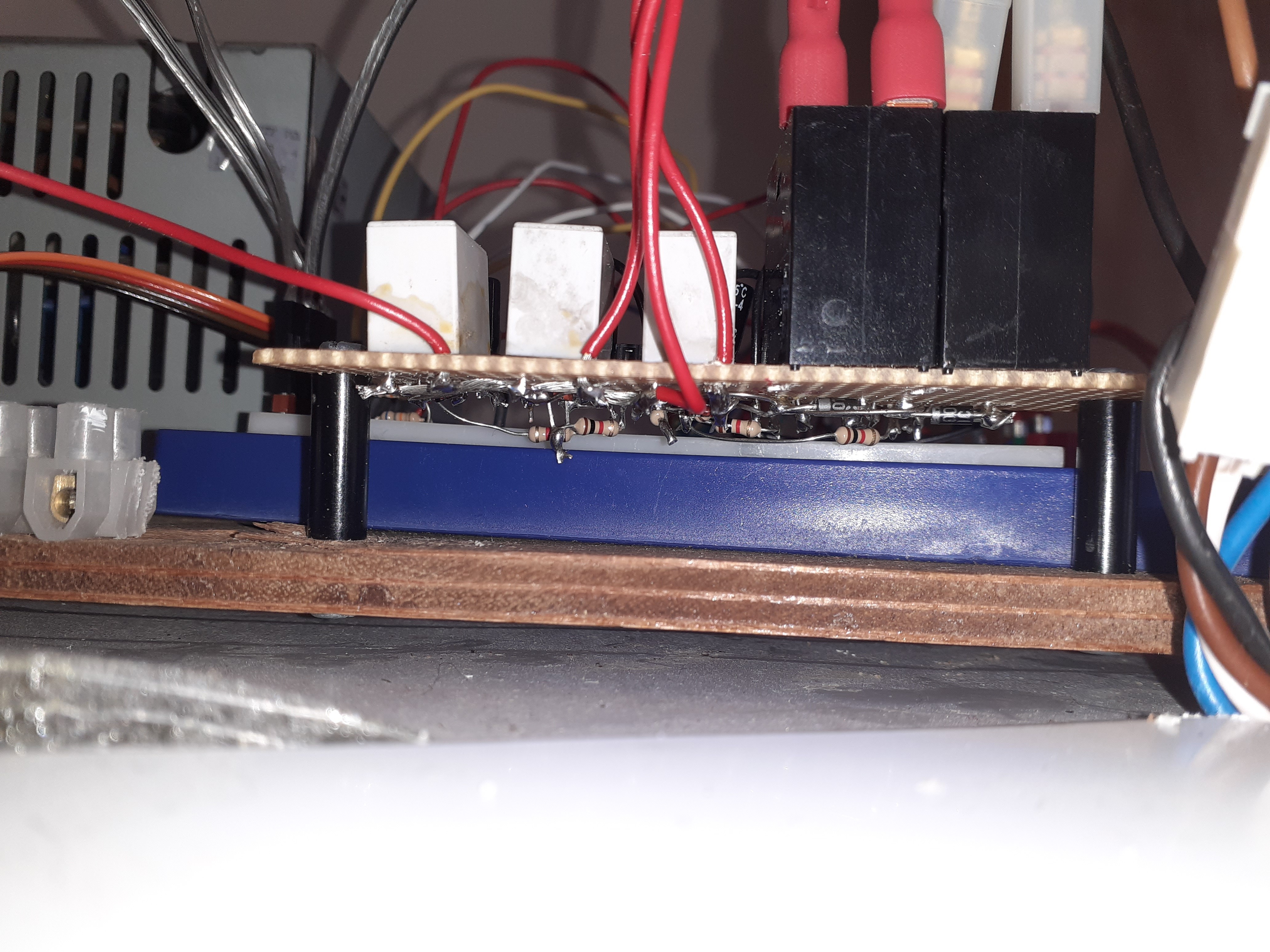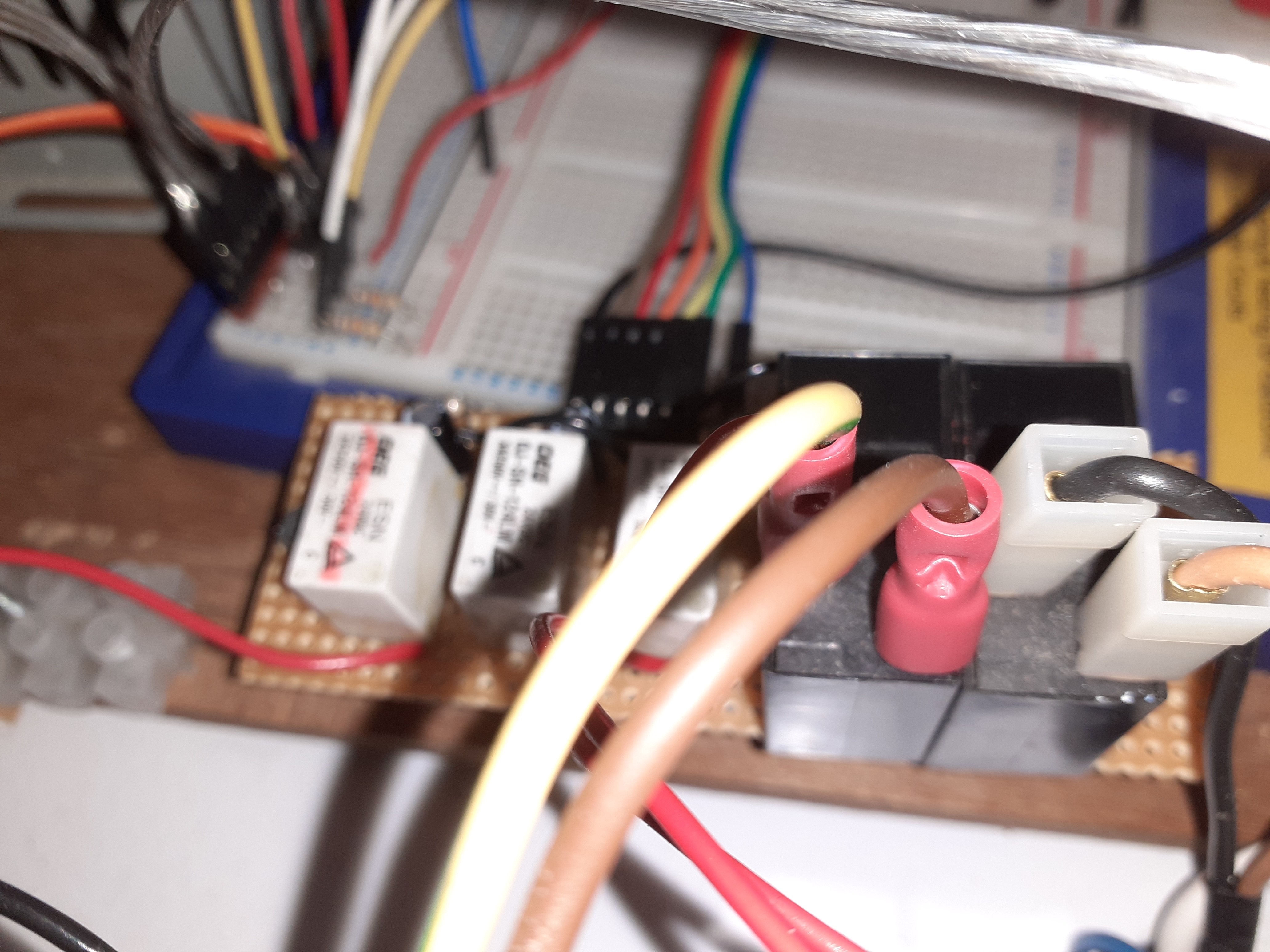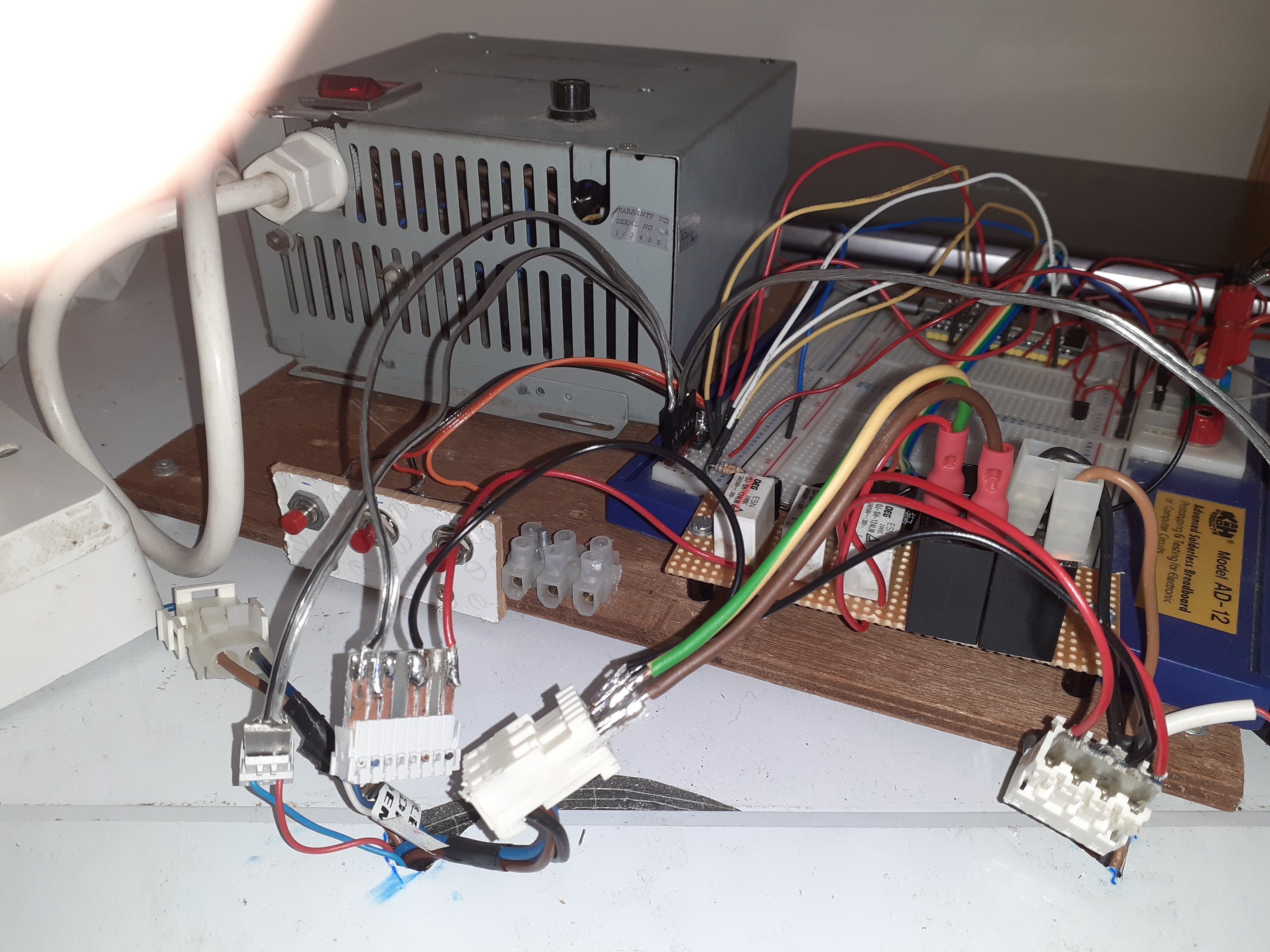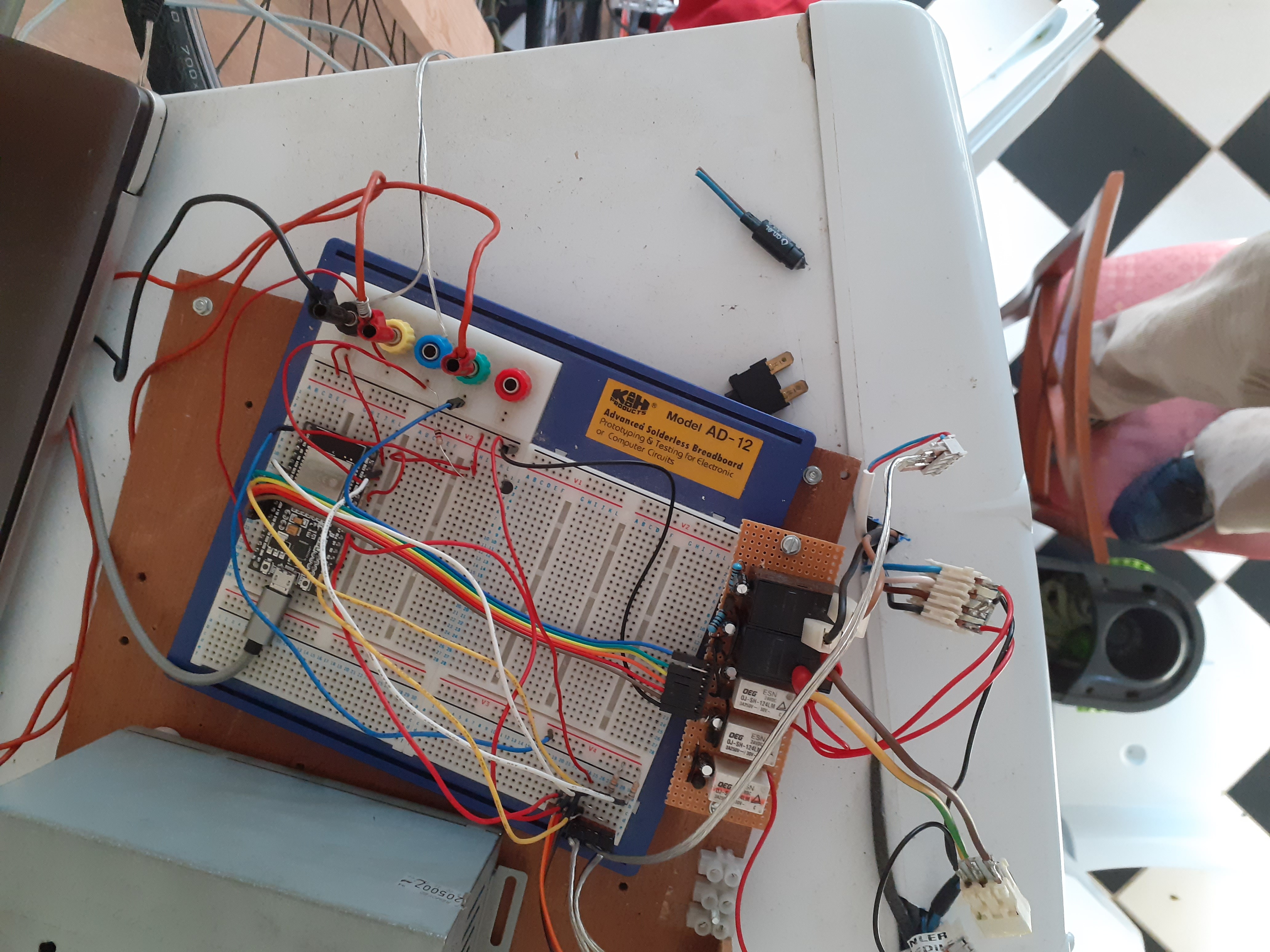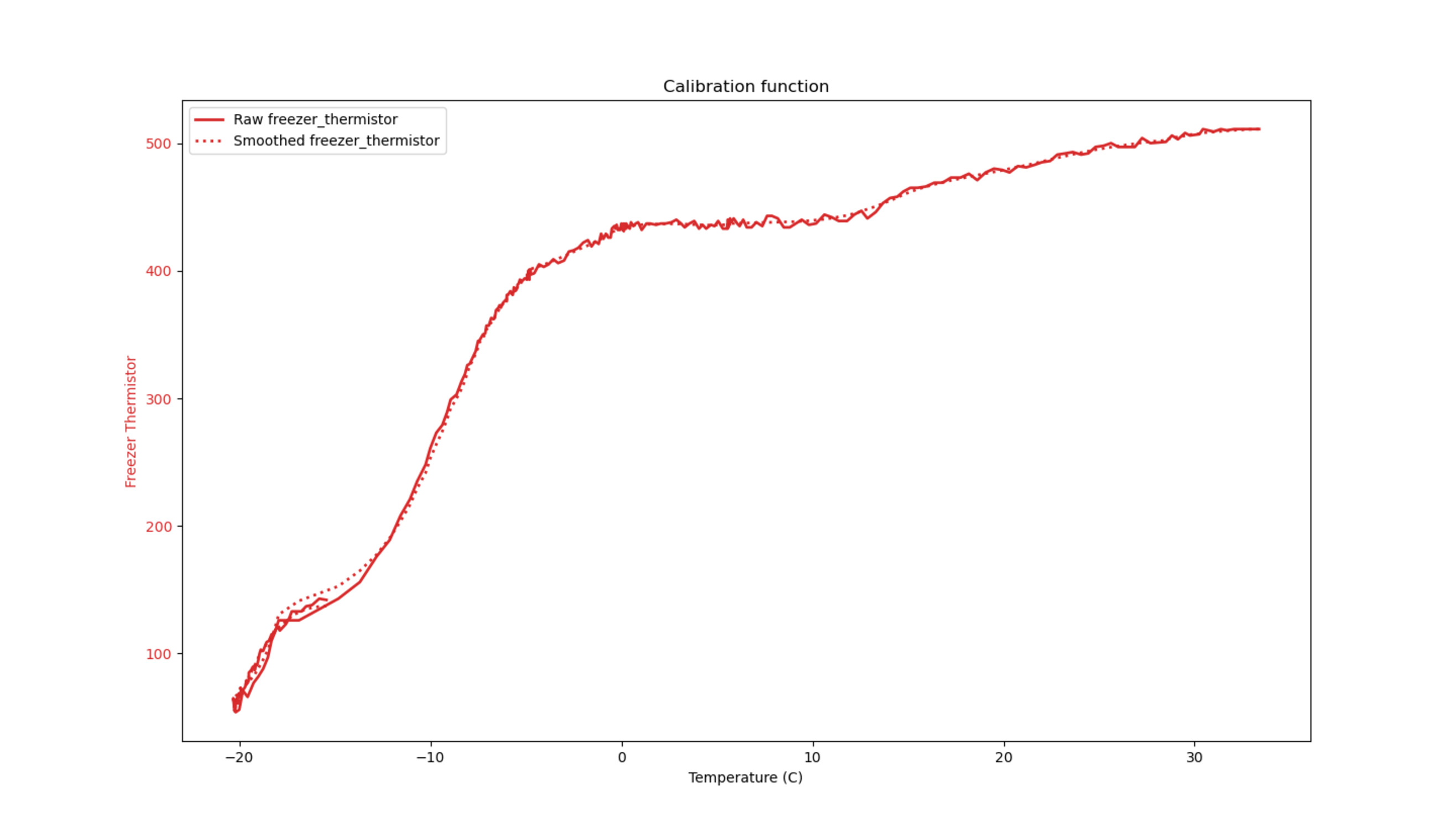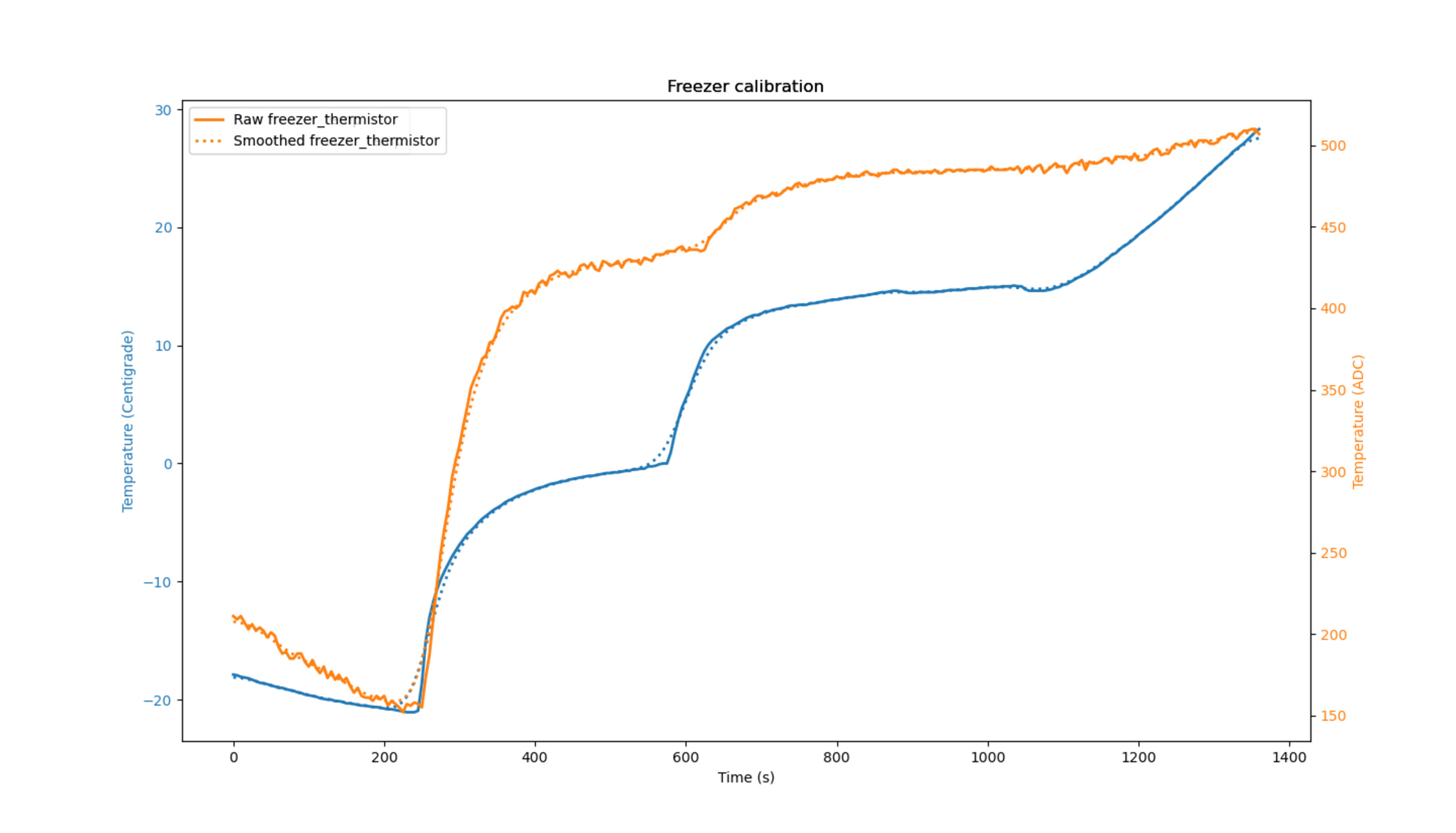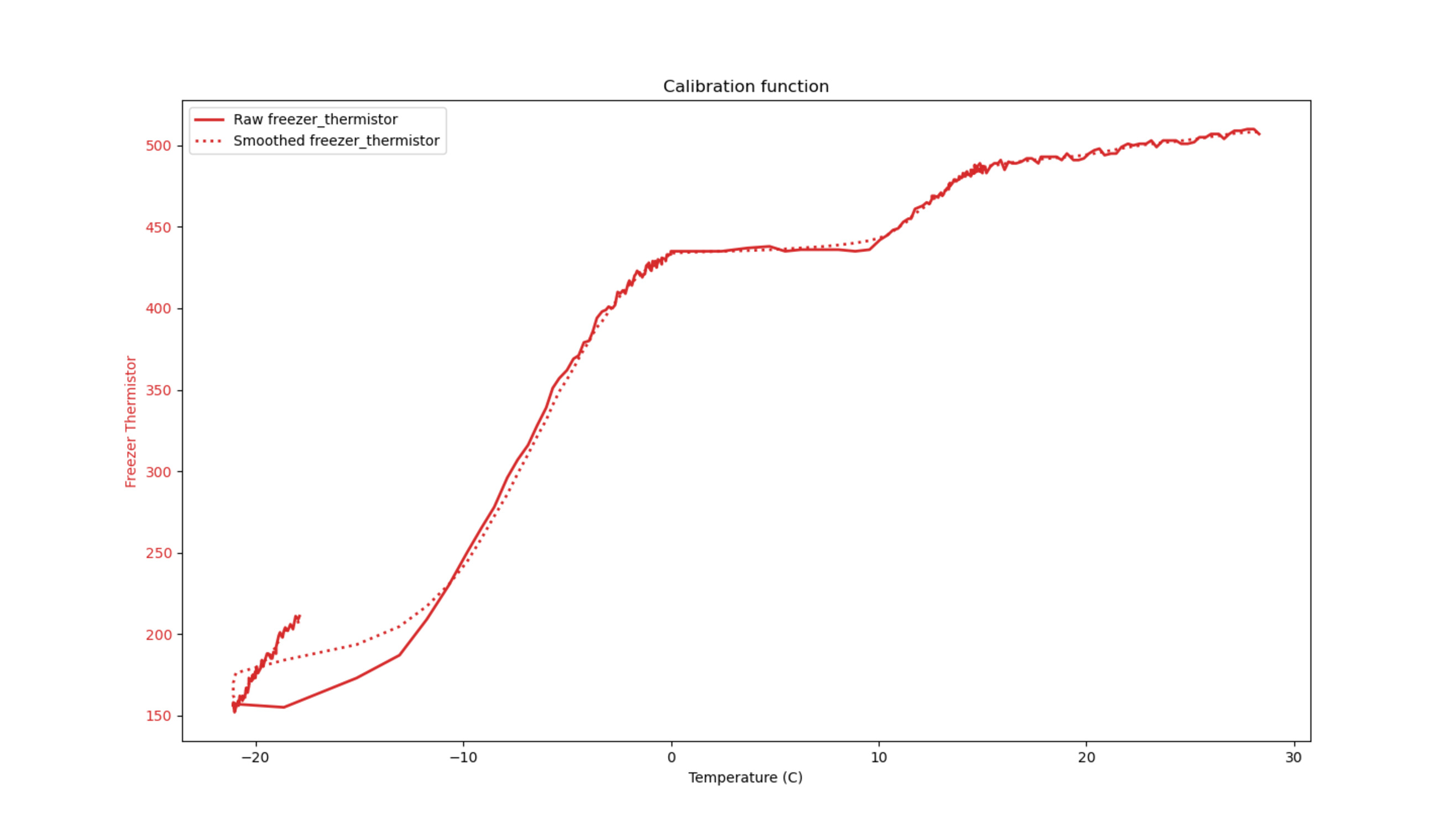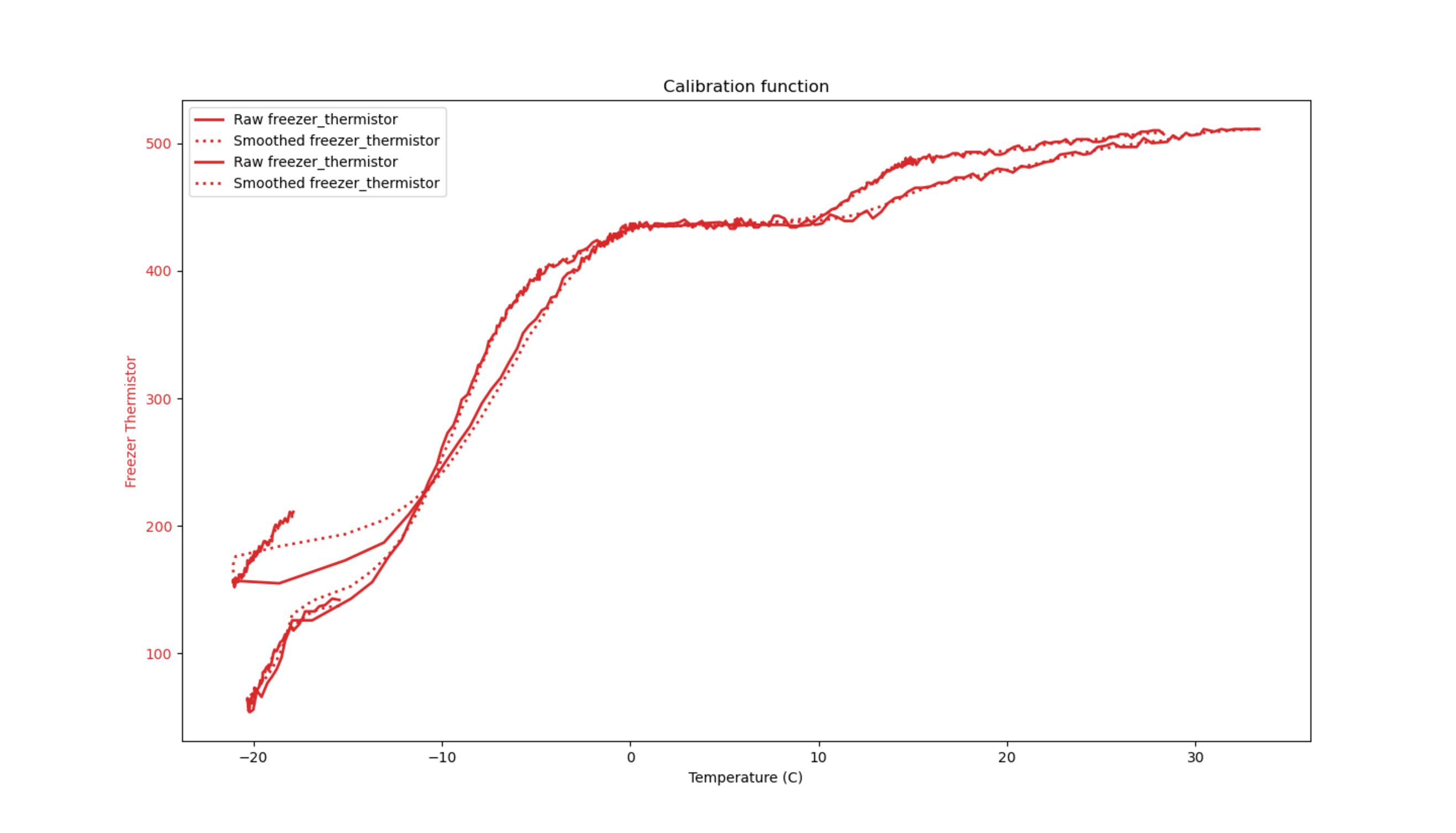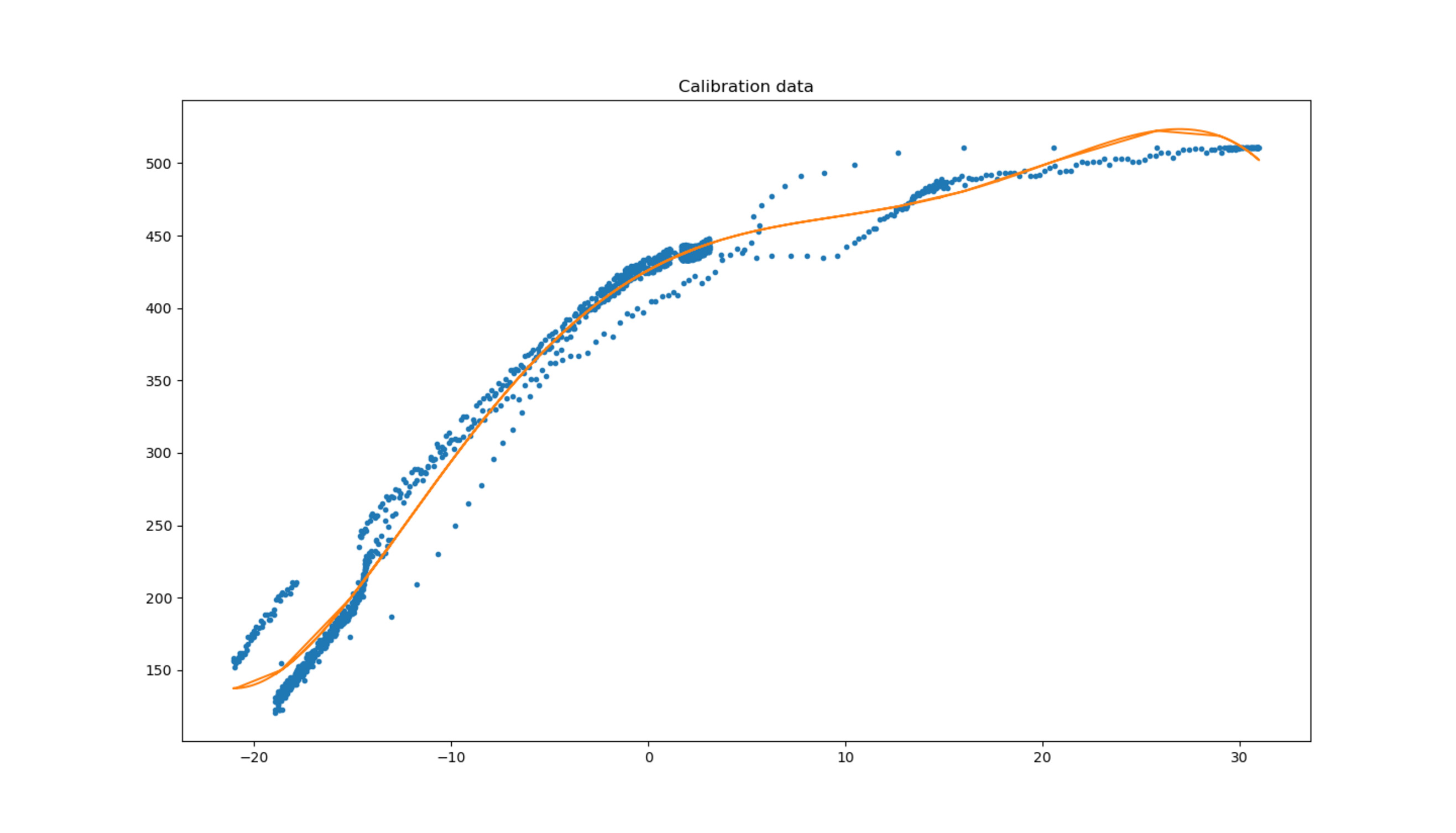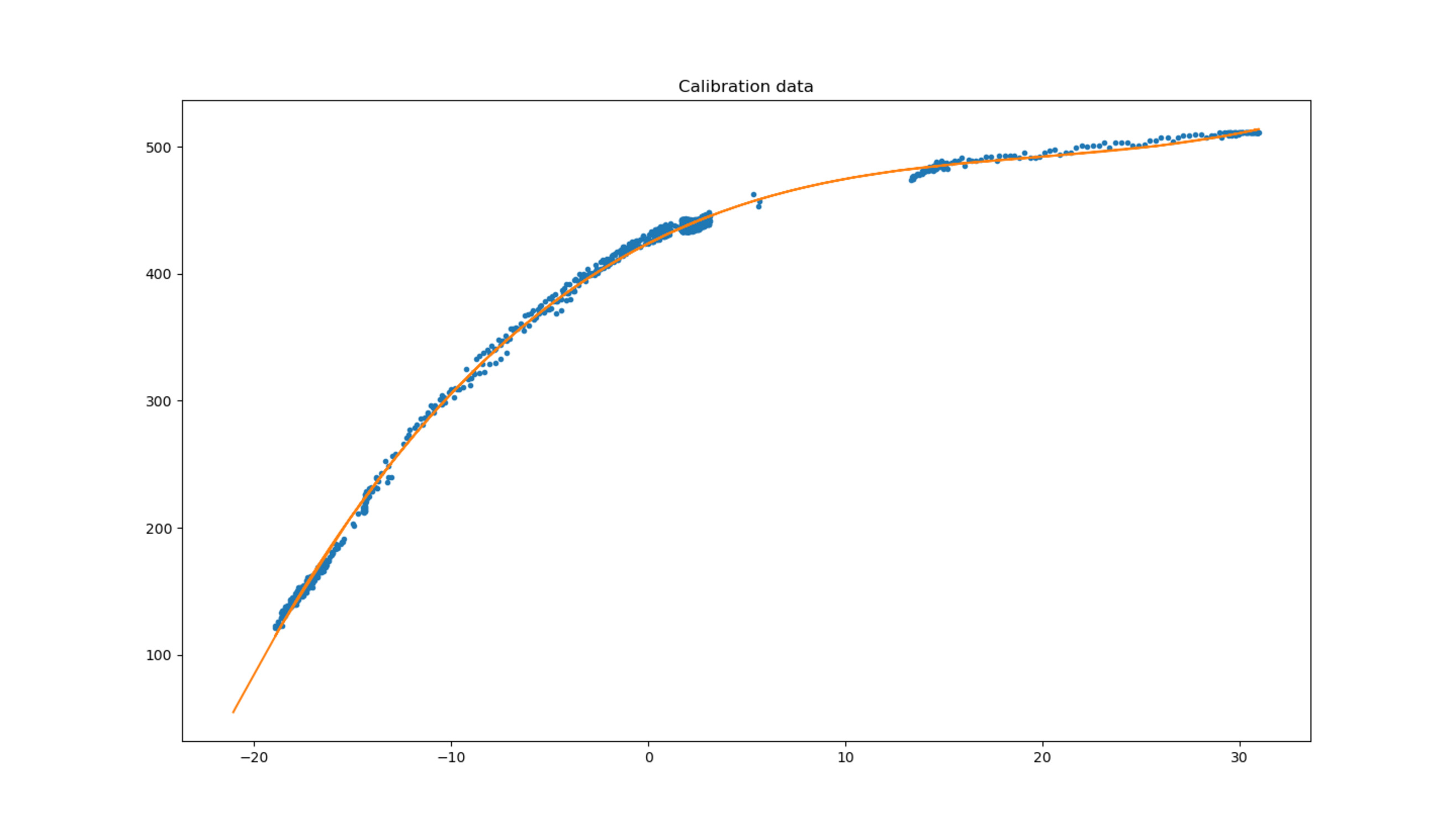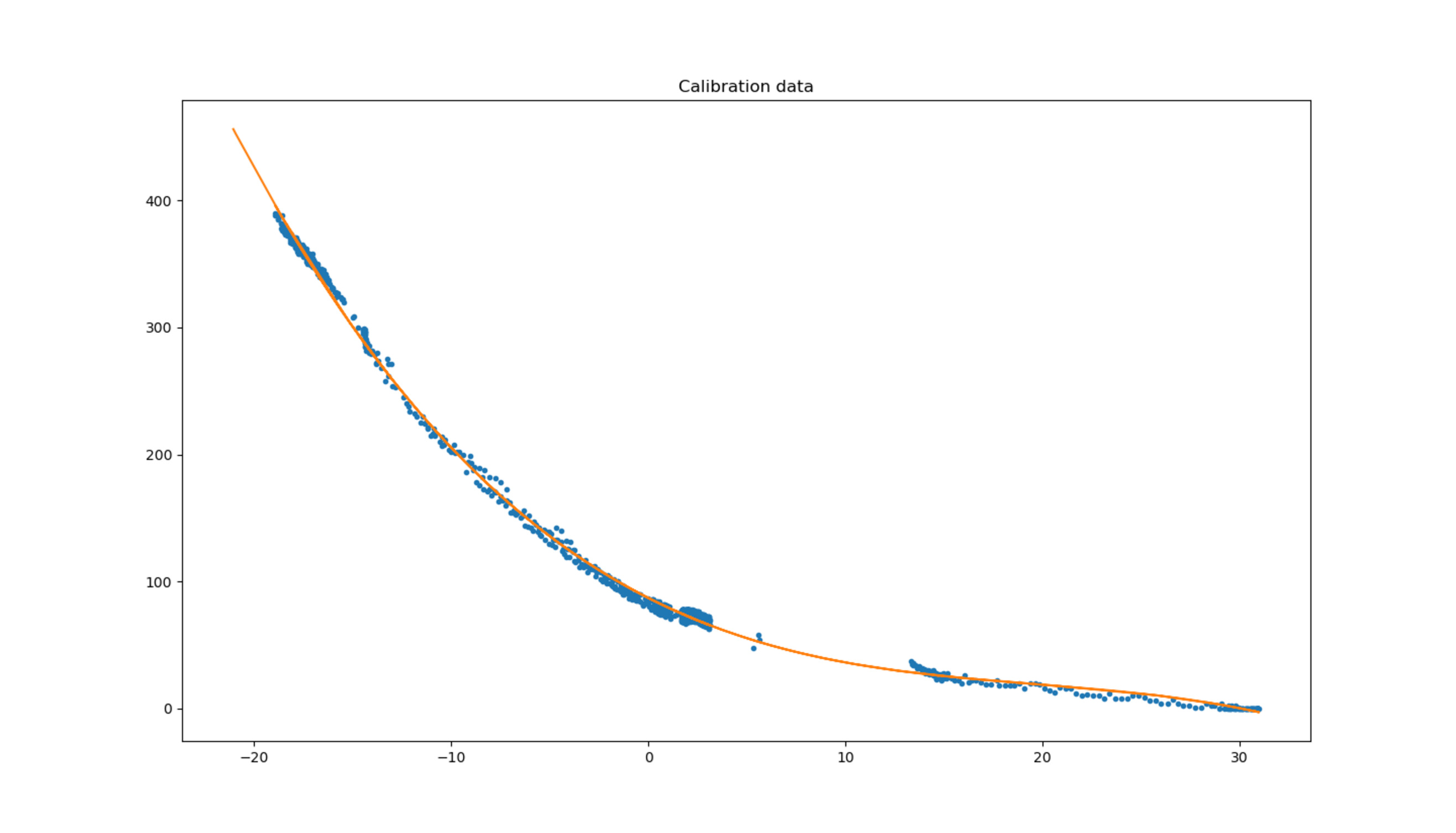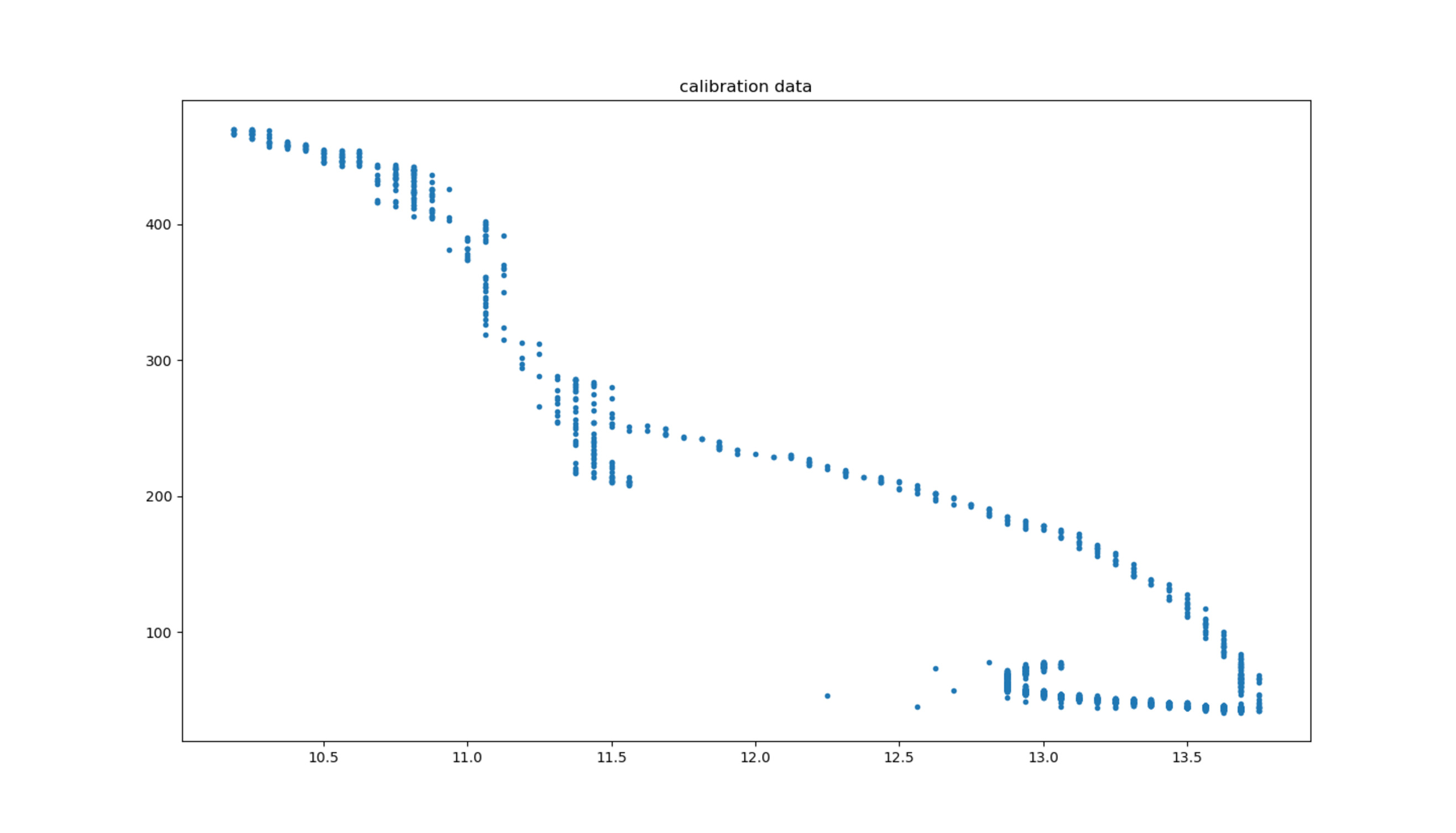Hardware
So we have five mains circuits: the lamp, the fan, the heaters, the compressor, and the ‘superfreeze’ button, which I think just adds the starting coils permanently. The original controller only switches four of these on the board (the superfreeze is a manual switch), and uses triacs for all except the compressor, which has a 10A relay. Of course, that requires the controller to be attached to the AC neutral, which isn’t a great idea with exposed hardware like a prototype balanced on a fridge. So we’ll use relays for everything: three low-current relays, and two great big 15A monsters, all from the microwave control board.
I wired these all up on protoboard, with back-emf diodes and BC547s as switches. To save current they are switched with a resistor bypassed by a capacitor: on connection the capacitor dumps full current on the relay, but then charges up and effectively disappears, so changing the resistor value allows us to set a lower holding current. These were picked by feel: 10k for the little relays, which seem fine with that (remember we’re talking 24v!). One little relay is most over-used and needed the resistor shorting out, and even then he did not make a happy clicking sound like his friends. I think he may be growing old, but we’ll use SSR in the final thing anyhow.
Here is the relay board:
And here’s the rest of the hardware:
The rest of the hardware was fairly straightforward. An ESP32, on a generic Chinese dev board, drives the relays. There are at present three DS18B20 temperature sensors: two to calibrate the thermistors, but I plan on removing them, and one to measure the room temperature, since it might be interesting to know what difference very cold or hot days make. The thermistors are in a potential divider connected to the ESP32’s famously bad ADC. A 100nF capacitor partly mitigates the ADC; we don’t need much resolution for this so we only read at 9-bits, and it’s pretty much useable.
Firmware
The ESP32 is running MicroPython, which is brilliant. Development is measured in minutes, not hours, and compiling is unneeded, plus I can actually read the final code. Of course all this comes at a price in terms of speed and current draw, but neither matter much here. We can also use asyncio, which saves having to think about the loop.
I first wrote a basic hal (hal.py) to turn things on and off. The
light is handled directly in the hal, as a callback to Peter Hinch’s
excellent async switch code.
With that the the fridge could be remote controlled over wifi using
webrepl, which is an amusing gimmick but not much use. So we use
MQTT and have it respond to commands sent to
kitchen/fridge/CommandControl. Simultaneously all the temperatures
are logged every five seconds over MQTT.
Now it was just a matter of picking resistor values to get a decent range on the ADC, which took a bit of trial and error, and then calibrating the thermistors against the DS18B20s. I cable-tied one to the thermistor attached to the heat exchange and ran some experiments. I’m not sure how hot you’re supposed to take the exchange, but 30 degrees seemed reasonable. Just as well, as the thermistor hits 0 at about that value.
Here is a graph of my first run, showing 511-thermistor value against time and temperature against time:
Hmm. That’s not very linear. Here’s the calibration curve:
I can certainly make a table of interpolations out of this, but it’s going to be big. Let’s try again:
Which has very different raw values. Here they are on top of each other:
Maybe the problem is thermal lag, even though the calibrating sensor is attached to the thermistor? In the last test I used the compressor (with ‘deep freeze’) to lower the temperature, and then the fan to warm it up (with the compressor off), and then the heater. I did the same for this test, but rather than switching to heaters at -4 I went all the way up to zero. I also left the fan on to slow the heating effect, and opened the freezer door so as not to heat up the enclosure. (I turned the fan off at 15 degrees, as I was getting impatient.)
How good does it need to be? Not necessarily very good, though that would be nice. I don’t mind leaving the sensors in permanently if need be.
After a bit of thought, I aggregated all the data, did a polynomia1l fit with numpy, excluded everything too far from the fit, did another fit on the resultant data, and generated a 3rd-order polynomial which fit the reduced data nicely:
The only trouble is that this is backwards. We want to go from sensor reading to temperature. The coefficients were horrendous, and the rearrangement (courtesy of Wolfram Alpha) was horrible, so I did the fit backwards. It needed a 6th-order polynomial to fit, but when I did a fit on the previous fit I got something which lay neatly—enough—on top of the data:
The only problem is that we have to solve a 6th-order polynomial on an MCU. Given that there are only 512 possibly values, a lookup table might be better, but then this MCU runs at 160MHz and doesn’t seem to care. Of course there’s no numpy for MicroPython (at least, not for doing curve fitting) so we compute the output manually:
def eval_poly(x, coeffs):
"""
Evalulate polynomial.
Coeffs should be passed little-endian, ie coeffs[0] = x^0.
"""
y = 0
for i, coeff in enumerate(coeffs):
y += coeff * x ** i
return y
In Cpython that returns slightly different values from numpy. Presumably numpy implements this stuff in c.
When I have enough data I shall do the same for the fridge thermistor. For now I only have laggy noise:
These thermistors are very non-linear! On the other hand, it seems like they picked a thermistor which would work well at freezing temperatures, which makes sense.
Discoveries
- The compressor has a manual timeout after it is switched off, preventing you from turning it on again for around 5 minutes. (Possibly temperature based?)
Control logic
We control the fridge and freezer separately. If the fridge is too warm, we turn the compressor on. If it is too cold, we turn the compressor off. If the freezer is too cold, we do nothing (as it doesn’t much matter anyhow). But we could turn the heaters and fan on. But if it is too warm, we turn the fan + compressor on.
Every time we turn the compressor off we start a ten minute timer which disables it until it elapses, to save wear and tear, just in case the starter relay doesn’t do so.
Every twelve hours we defrost, by running for five minutes or until the cooler reaches 10 degrees. Additionally, if the freezer temperature fails to fall by 2 degrees in fifteen minutes (this might need adjusting), we guess that it needs defrosting and run a panic defrost, stopping the current cooling cycle. If it fails to fall by one degree in eight minutes, we turn on the deep freeze. Hopefully this logic would sooner or later catch an ice build up, but we can always review it later—or indeed, command a manual defrost over mqtt.
The fridge temperature is taken from the fridge thermistor. The freezer temperature is taken from a DS18B20 on a bit of flat cable, stuffed in a drawer. The cooler temperature is taken from the attached thermistor. (I suspect they guessed the fridge temperature by running the fan for a bit and then sampling the cooler. This would fail if the thing were awfully iced up, as it was this time.) The room temperature is taken from another DS18B20 on top of the fridge. Whilst I plan to box up the controller and redeem the power supply (currently it’s running from a dual lm317 supply I built as a child), I’ll leave it separate and on top—that way it’s easier to get at.
Everything can be remotely controlled, and everything is logged to
kitchen/fridge/log and kitchen/fridge/temperature so I should be
able to get some data on efficiency and hopefully tune it.
Limitiations
At present the DS18B20s sometimes fail to convert (gives 85). I’ve reduced the frequency by trying repeatedly, but give up after 3 attempts (might need to wait longer). The graphing code just ignores any 85s. I suspect the onboard 3.3v regulator is struggling to output enough current to power the thing parasitically. Additionally, I need to check that DQ is properly pulled high in the waiting time: if it isn’t, then all the current is coming via the 1k pull up, which is likely not enough. The driver ought to put the pin in output mode and drive it high for the duration, but without a datalogger on it/examining the source code there’s no way to tell.
Further developments
I should like to add a buzzer, so we can warn if the door is left open or the device goes out of temperature range. I’m also not quite sure what happens at the moment if the wifi goes down: I suspect the controller will be fine, but I need to test it (the risk is more a buggy connection which never gets established). And, of course, it should be in a proper box so nobody goes a-gefingerpoken, which could be interesting as nearly everything is at mains potential.
And, most importantly, we just need to get a lot more data so we can characterise it a bit better.
{"msg": "start cooling", "msg_id": 11, "timestamp": "2021-1-22 19:43:11"}
//response to status query
{"msg": "{'heaters': False, 'fan': False, 'deep_freeze': False, 'compressor': False, 'light': False}", "msg_id": 17, "timestamp": "2021-1-22 19:43:33"}
{"msg": "Turning compressor on", "msg_id": 57, "timestamp": "2021-1-22 19:47:34"}
{"msg": "Turning compressor and fan on", "msg_id": 58, "timestamp": "2021-1-22 19:47:34"}
//response to status query
{"msg": "{'heaters': False, 'fan': True, 'deep_freeze': False, 'compressor': True, 'light': False}", "msg_id": 74, "timestamp": "2021-1-22 19:49:3"}
{"msg": "Deep freezing as freezing slowly", "msg_id": 88, "timestamp": "2021-1-22 19:50:27"}
//response to status query
{"msg": "{'heaters': False, 'fan': True, 'deep_freeze': True, 'compressor': True, 'light': False}", "msg_id": 202, "timestamp": "2021-1-22 20:2:2"}
Eventually, I got round to having another look at the controller. See part three: fixing the defrost.
Obviously, this is a logarithmic (reverse-log) rather than polynomial fn. But I was a bit daft the day I did this, and my day-job is in theology, not maths. As it happened I dropped the thermistors entirely in the end. ↩︎
